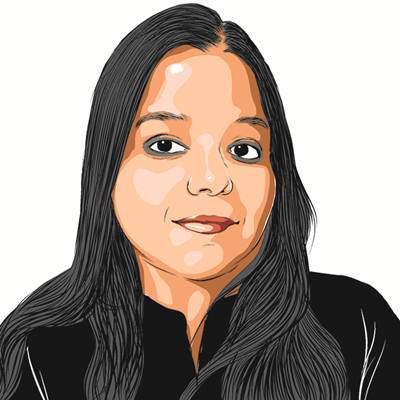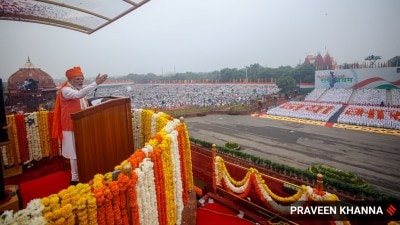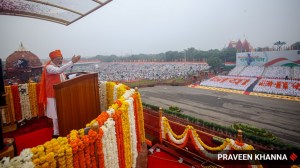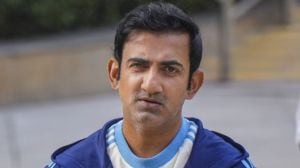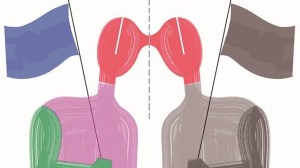Seventy-eight years since the road to India’s independence went through Punjab’s heart and Pakistan was born, the pain of a generation that witnessed the Partition riots in 1947 has remained alive, of seeing their Punjab divided and innocents massacred.

Sitting at his sector-11 residence in Chandigarh, Verma closes his eyes and a scene that he had witnessed as a child at his birthplace Mianwali (now in West Punjab, Pakistan) still makes him tremble.
Story continues below this ad
A drop of a tear appears in the corner of his eye, as he says: “A child in our neighbourhood in Mianwali was attacked and the rioters hammered an iron nail into his head. I don’t know from where so much of hatred came suddenly. I used to wonder as a child then. I still do. Mobs were attacking and had to leave Mianwali even as my mother Dayawanti never wanted to. Till her last breath in 1973, she was hopeful of going back and revisiting our home. I wish I could go back in time and take her.”
Just two when he lost his father and seven when he migrated from Mianwali to Ferozepur on Indian side during the partition with his mother and siblings, Verma, a child who survived the horrifying partition riots, rose to become a High Court judge.
After migration to India, he and his siblings did odd jobs in their childhood for survival- from cutting and selling wood from jungles to selling groundnuts, and later he also worked as a proof reader at a press and a clerk at Punjab Secretariat, Chandigarh. For majority years of his service as High Court judge since 1996, he was posted in Rajasthan. After retirement, he is still serving in Lok Adalat at Chandigarh.
Verma’s father Khillu Ram, a class A officer of the “Railways Claims Tribunal”, died in October 1942 during the lathicharge on anti-British “Quit India Movement” protesters in Karachi, and the family then shifted from Sindh’s Sukkur (where father was posted) to their hometown Mianwali.
Story continues below this ad
“In Mianwali where my grandparents lived, we had a palatial bungalow in Mohalla Gaushala and at least 100 acres of land. There were at least five staffers to help my mother in domestic chores. Abhi bhi naksha saamne aata hai (I still get the map of Mianwali in front of my eyes). Whenever I meet someone from Pakistan, I ask if Mohalla Gaushala still exists and they say it does,” says Verma.
Even after India gained independence on August 15, 1947 and Pakistan was born as a separate, Muslim-majority country, Verma says his family had no plans to leave Mianwali until September that year as “their colony seemed peaceful.”
“It was perhaps September 27 or 28 when the worst happened. A mob of at least 10,000 attacked Mianwali and surprisingly there wasn’t a single local face. Local Muslims never attacked us, in fact they saved us. It was our family friend Mustafa Khan who stood as shield in our street and did not let rioters enter. He used to consider my mother as his sister. Thousands of Sikhs and Hindus were killed by rioters in Mianwali and it became our majoboori (compulsion) to leave. An Army truck evacuated my family but unfortunately I was left behind. I then jumped into another truck and what I saw still makes me tremble. The truck was full of corpses, one on another. The truck did not stop anywhere before it arrived at a place where a huge pit was dug probably to dispose them,” says Verma.
After reuniting with his mother and siblings at a refugee camp, Verma says they took a goods train to reach India, but the journey which shouldn’t have taken more than 9-10 hours, took more than five days.
Story continues below this ad
“The train did not move for four days from a station Lalamusa (now in Pakistan) as rioters were ready for massacre on the way. Rioters would sit on trees with guns and open fire on moving trains. We were instructed to keep our heads down to dodge bullets. At Lahore station, rioters were standing with swords but train was rushed with great speed and it only stopped after reaching Attari,” he remembers.
Verma says he cannot forget the moment when he had snatched some chapatis from the hands of a Sikh man at Attari railway station. “So hungry I was that I snatched the chapatis he was holding. He hugged me and said “it’s for you only.” I can never forget that hug. He then gave me more food for my mother and siblings. Even during those horrifying times, Sikhs were doing sewa. I can never repay his debt,” says Verma.
But the worst was yet to come, as fatherless Verma and his siblings initiated efforts to rebuild their lives in India, brick by brick. The family moved to Ferozepur where his elder sister was married, and it’s in Ferozepur “his mother faced the hardest times.”
“Imagine how you would feel when you see your mother working as a domestic help in others’ houses when she herself had five household staff in Mianwali. We lived in Mohalla Ganga Mandir Bansi Gate in Ferozepur and my mother started washing utensils and clothes in other houses to feed us. I always wished to return her the comfort she had when my father was alive. As a child I used to accompany her sometimes to the houses where she worked and they would give me some food out of sympathy,” says Verma.
Story continues below this ad
Later in 1955, the family got to know that they had been allotted a chunk of land as government aid in Saidopur (now in Haryana’s Yamunanagar district), and they moved from Ferozepur.
“I started doing whatever I could to ease my mother’s pain. I started cutting wood from jungles and sell in nearby towns. Whatever I could earn, an anna or a rupee from that wood mattered a lot for us,” says Verma, who then cleared matric (class 10) from Hindu AS Senior Secondary School, Sadhaura, and also bagged a scholarship.
But even then Verma had to leave his studies in midway due to lack of money. “The representatives from DAV College, Ambala, came to our village and told my mother that they would exempt tuition fee and provide free books but we had to pay admission and hostel fee which was not more than Rs 100. But we had no money,” he remembers.
“I did not pursue science considering the expenses and instead opted for Faculty of Arts (FA) and took advantage of the relaxation given to refugees by Panjab University to attempt BA/FA via distance education. After clearing FA, I saw an advertisement for the post of clerk in Punjab Secretariat, Chandigarh, and applied. I was 17. I got the job and my first salary was Rs 100. My mother just cried. Then I also completed my BA while working as clerk in the office of then Punjab CM Partap Singh Kairon in 1957,” he adds.
Story continues below this ad
Verma then joined the evening classes in PU’s law department in 1962 and started practicing as an advocate in 1964. He fought hundreds of cases for the underprivileged pro bono, before being elevated as a high court judge in 1996 and retiring in 2002.
“When someone asks me if I wish to return to Pakistan, I say no I don’t want to live there even for a day but yes, I do wish to see my home in Mianwali once. It was my mother’s wish. Someone told me Mohalla Gaushala still exists. I still think why were we displaced? Even if partition had to happen, why we killed each other?”, he asks.
“But what people of India and Pakistan would never be able to forgive themselves for is what we did to our women. They were the worst sufferers of 1947. They were abducted, raped, held captive for years. Our sufferings are nothing in front of what women went through during partition,” he says.


